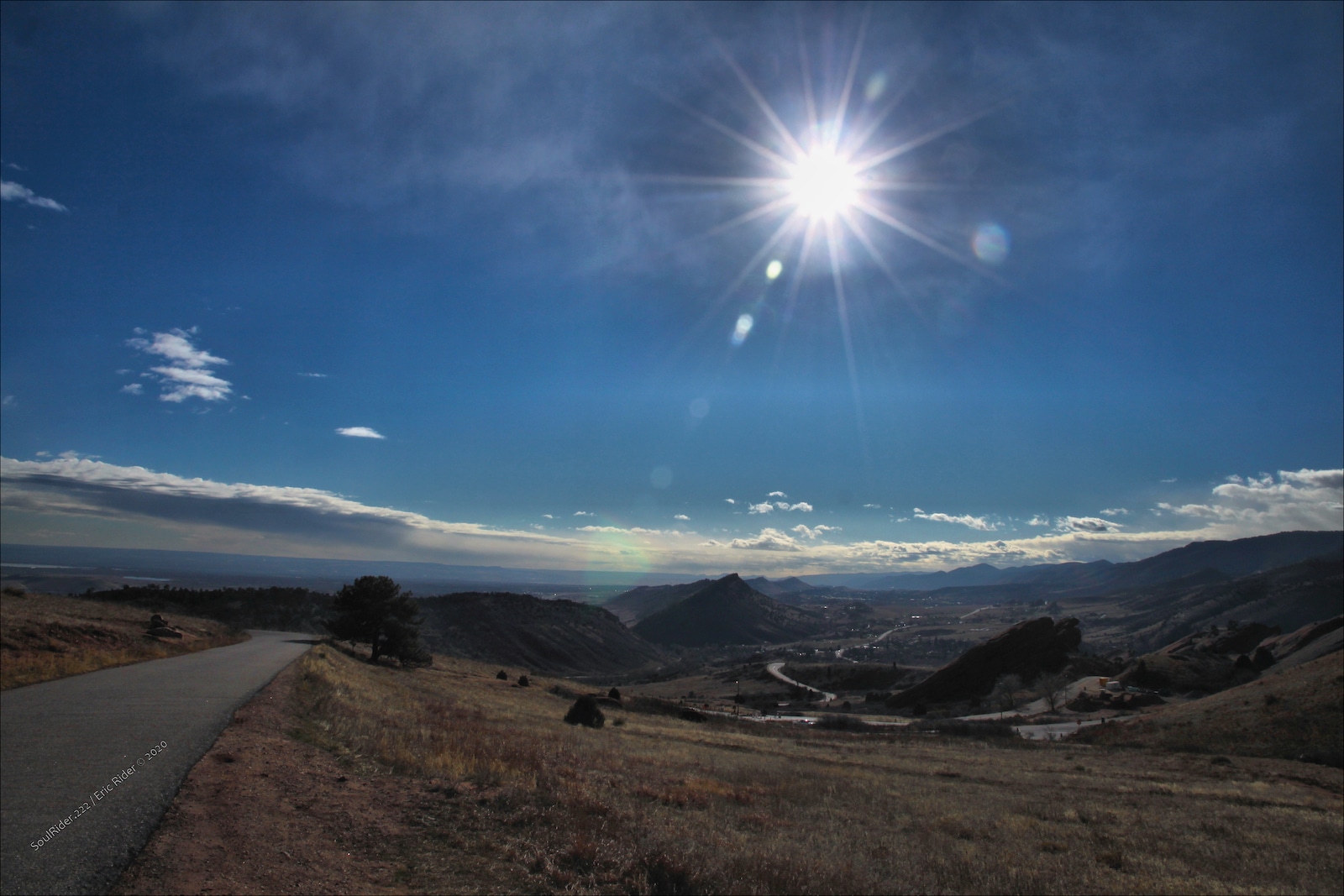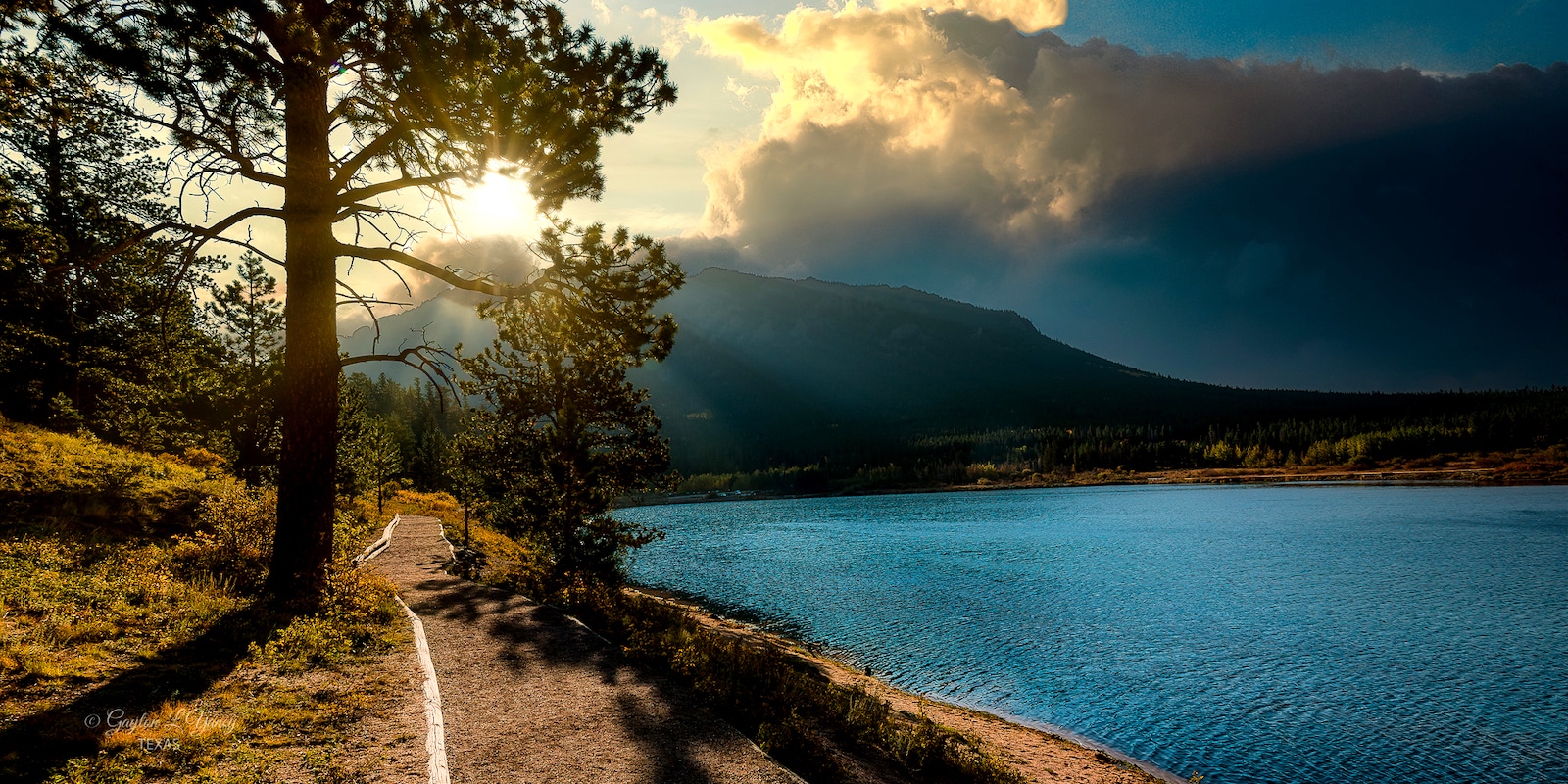Known for its high elevation and thin mountain air, it’s no surprise that Colorado is one of the sunniest states in the country. Let’s look over the common myths around sunshine in Colorado, the sunniest places throughout the state, and tips for staying safe and informed while in the sun.
The Myth of 300+ Days of Sunshine

An unofficial slogan dating back to the nineteenth century, people from around the country know Colorado as the home of 300 days of sunshine a year. While the Centennial state surely has great weather, the popular claim of 300 days is a little exaggerated.
The origins of the myth supposedly reach back to the 1870s, when a railroad publicist used the slogan to attract people to move to Colorado. After that, the motto stuck around since the lack of technology made it difficult to scientifically test the claim.
Interestingly, the Colorado Climate Center did a study on sunshine in the 1990s using data from “sunshine switches” in Denver, Colorado Springs, and Pueblo. These switches track sunlight by the minute, and the study found that if a “sunny day” is defined as a day that receives at least an hour of sun, then Colorado is home to 300 days of sun per year.
Understandably, most people won’t call a day sunny if it only receives an hour of sun. Thankfully, the National Weather Service provides helpful definitions for determining sunny days based on the percentage of cloud cover. Using these definitions, Denver (and much of Colorado) has 115 clear days, 130 partly cloudy days, and 120 cloudy days on an average year.
Though not quite 300, 245 clear or partly cloudy days is nothing to scoff at, and in fact, it’s much better than many other areas of the country.
Sunniest Cities in Colorado

The entirety of Colorado is a sunny place from east to west, so you really can’t go wrong if you are looking to plan a trip around reliable weather. However, some places score a few extra days of sunshine on average, we’ll look at just a couple of the top destinations.
Alamosa, CO
Located in the San Luis Valley, Alamosa is one of Colorado’s sunniest cities (but ironically, also one of its coldest). Using the same NWS definitions described above, Alamosa receives 148 clear and 137 partly cloudy days on average each year, totaling up to an impressive 285 total days of sun.
Situated along the Rio Grande River, Alamosa’s good location and sizzling sun make it a worthy destination. Visitors can enjoy watching wildlife at the Alamosa National Wildlife Refuge or the Blanca Wildlife Habitat Area, check out some relaxing thermal spring resorts like Joyful Journey Hot Springs, or explore the beautiful mountains in the city’s backyard.
Pueblo, CO
With 258 days of sun in an average year, Pueblo is another one of the state’s sunniest areas. Home to a thriving art scene, several interesting museums, and even a whitewater park running through downtown, the “Steel City” is a perfect place to explore year-round.
During the summer months, check out the Colorado State Fair or the Pueblo Chile & Frijoles Festival. For the rest of the year, consider stopping by Lake Pueblo State Park, or enjoying a sunny day on the Historic Arkansas Riverwalk in downtown.
Other Sunny Big Cities
Though not quite as sunny as the two previous examples, the following cities around Colorado also have quite a few sunny days each year.
- Colorado Springs: 247 days of sun
- Denver: 245 days of sun
- Grand Junction: 242 days of sun
Arkansas River Valley Banana Belt
Running from Buena Vista to Pueblo, the Arkansas River Valley is often referred to as a banana belt. It passes through notable towns on the southern front range including Cañon City and Florence. Enjoying warmer weather on average than the surrounding areas, banana belts often occur on the lee side of mountain slopes.
Though banana belts aren’t always sunnier than the surrounding area, adiabatic heating ensures this area of the state stays warmer than the rest, making it an excellent choice for year-round visits.
Sun Intensity in Colorado

Due to the state’s elevation, the sun throughout Colorado often seems much more intense (and it typically is). It can even lead to quicker sunburns and higher risks of skin cancer. Though exact numbers vary, research points towards the fact that sun intensity rises as elevation increases. The EPA conservatively claims that UV radiation increases by about 2% for each 1,000-foot increase in elevation.
Taking this into account, Colorado’s low point (3,317 feet) has UV radiation nearly 7% higher than what is found at sea level. On the other end of the scale, the UV radiation at the state’s high point on Mt. Elbert at 14,439 feet is almost 30% higher than at sea level.
This effect is due to the thinner air at elevation. Though sunlight can travel unimpeded through space, the Earth’s atmosphere has the important job of scattering UV rays, a job made much more difficult as elevation increases and the air becomes thinner.
Additionally, snow reflects a large portion of the UV rays that make it to the ground, meaning skiers, snowboarders, and everyone else outside during Colorado’s long, snowy winters receive even more intensity from the sun’s rays.
Staying Safe in the Sun

Colorado’s many days of sunshine make it an easy and reliable place to travel around, but visitors and locals alike must take precautions to ensure they stay safe from the sun. Checking the UV index each day is one of the best ways to stay informed. The CDC recommends that sun protection be used when the UV index rises above 3.
Though it may seem obvious, shade and long clothing are two of the best ways to stay protected from sunburn and heat-based illnesses. Long-sleeved shirts provide the best protection, and some companies even make certified clothing that offers UV protection. Additionally, wear a hat and sunglasses to protect the face and eyes.
Finally, apply and regularly reapply sunscreen as a final layer of protection against the sun. The CDC recommends using sunscreen with an SPF level of at least 15. When used together, these strategies make it possible to enjoy even the sunniest of Colorado days.
This has been our roundup of the most important info on the sun in Colorado. Stay safe, and enjoy your visit!


 Discover these Ice Caves in Colorado
Discover these Ice Caves in Colorado